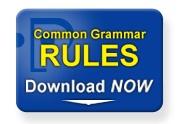 Last week we talked about when to use onto (one word) versus on to (two words). As promised, we’re talking about the distinction between into versus in to this week. While some of the same guidelines apply, into can be trickier because it has more definitions and different strategies for remembering which form to use.
Last week we talked about when to use onto (one word) versus on to (two words). As promised, we’re talking about the distinction between into versus in to this week. While some of the same guidelines apply, into can be trickier because it has more definitions and different strategies for remembering which form to use.
Demystifying Into
Like onto, into (one word) is a preposition that indicates movement. But into can mean so much more. Understanding the various definitions of into can help in figuring out whether to use one word or two. If you’re questioning whether to use into or in to, start by determining whether the problem sentence fits into one of the definitions or examples below.
1. Into can indicate entry, insertion or inclusion:- Come into my office.
- The proposal didn’t fall into any of the categories the committee had established.
- The client incorporated our suggestions into the final report.
2. Into can apply to a state, condition or transformation:
- Peter got into trouble for skipping school.
- Upon being kissed, the frog turned into a prince.
- The contract went into effect on July 1.
3. It can also apply to an occupation or action:
- Lila plans to go into medicine after returning from the Peace Corps.
- Frank and Ev got into a heated argument over which team has the better quarterback.
- The professor promised Marcella she’d look into the plagiarism allegation that afternoon.
4. Into can mean “involved with or interested in”:
- Taylor has always been into classical music.
- Rob got into drugs as a teenager.
5. It can mean “in the direction of”:
- Jack’s mother repeatedly told Jack he’d go blind if he looked into the sun.
- Haley habitually stared into space in history class.
6. Into can refer to a point in time or space:
- The students were well into the semester before they had their first test.
- The first space shuttle was launched into orbit in 1981.
7. In math, into can be used to indicate the dividend in division.
- How many times does 2 go into 8?
Look at each word or phrase following into above. Notice anything? Yep, they’re all nouns or noun phrases. In fact, into (one word) is usually followed by a noun or noun phrase. BUT (you knew it was coming, right?) … that’s not always the case. Check out the first example in the next section: Account is a noun, and it follows in to (two words).
Frustrating, isn’t it? As much as we want hard-and-fast rules, the English language is full of exceptions. But at least we can narrow the possibilities by using the guidelines that are available.
Moving On to In To
As with on to, when in to is two words, in functions as part of the verb phrase (bold italic text in each example below), and to is a preposition (orange text) or part of the infinitive (green text):
Log in to your account after you receive the activation code.
Tune in to learn more.
A common recommendation for when to use in to as two words is that if the sentence makes sense when you insert “in order” between in and to, use two words. That advice works for the second example above (Tune in in order to learn more) but not for the first. So although it’s not foolproof advice for when to use in to (two words), it’s a good starting point.
One Word or Two?
The first example in the preceding section often proves the most challenging because many have trouble distinguishing whether in is part of the verb phrase. The confusion is understandable when you look at the examples in the first section above, in which into (one word) always follows a verb: come into, look into, launched into. It gets even more muddled when you compare two sentences using the same verb (e.g., turned) but different forms of into:
- The ugly duckling turned into a beautiful swan.
- The student turned his paper in to the teacher.
This is where the above definitions of into come in handy. The first sentence meets the criteria of definition no. 2, so into (one word) is correct. Unless the student in the second example is David Copperfield, transforming the paper into a teacher is unlikely (i.e., the sentence doesn’t make sense with into), so in to is correct.
So, to figure out whether to use into (one word) or in to (two words), follow these guidelines:
- Does the sentence make sense with either into or in to? If no, use the form that makes sense. If yes, go to question 2.
- Does the use of into fit one of the definitions/examples given in the first section above? If yes, use into. If no or you’re not sure, go to question 3.
- Does the sentence make sense when you insert “in order” between in and to? If yes, use in to. If no, use into.
Let us know in the comments if these guidelines are helpful, or if you have questions about specific usages of into versus in to.




